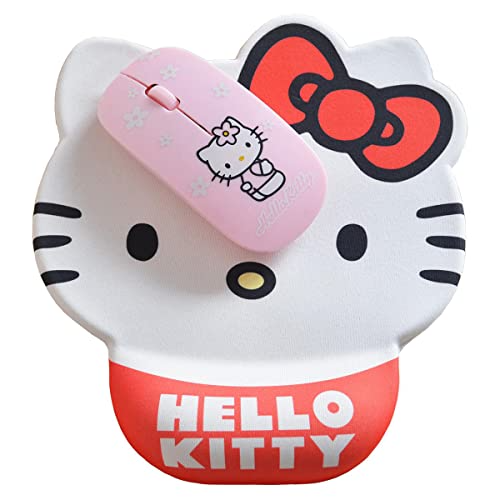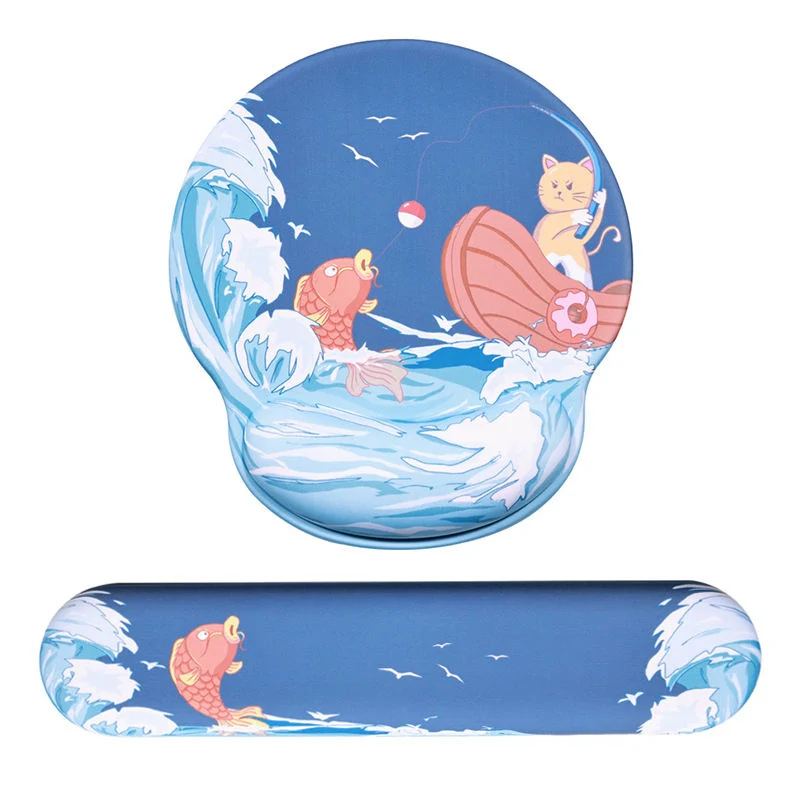Introduction to the Mouse Pad
The mouse pad, though a seemingly insignificant accessory, plays a critical role in our daily computing activities. Its importance often goes unnoticed even though it enhances the user experience significantly. The journey of this modest companion from its humble beginnings to becoming a modern-day necessity is fascinating. A mouse pad offers numerous benefits, not just for the mouse but also for the user’s comfort and the longevity of their desk surfaces.
The purpose of a mouse pad is straightforward: to provide a smooth, consistent surface for a computer mouse to operate on. However, not all surfaces are created equal. A mouse pad allows the mouse sensor to detect movement accurately. Without a proper surface, the mouse might struggle to track movements, leading to a frustrating user experience. While some argue that modern optical and laser mice work perfectly fine on a variety of surfaces, enthusiasts know that a high-quality mouse pad makes a significant difference.
The history of the mouse pad dates back to the early days of computing. Initially, mice had ball systems that required a clean surface for optimal performance. Mouse pads were introduced to prevent the ball from getting dirty or scratching the desk. With the advent of optical mice, this problem was somewhat mitigated, but the need for a stable and smooth surface remains.
Over time, mouse pads have evolved in design and material. From simple fabric on rubber to complex multi-layered constructions featuring memory foam and high-tech surfaces, the array of options is vast. High-end mouse pads cater to professional gamers and graphic designers who require precision and speed. These premium pads can even feature built-in wireless charging for compatible devices, combining functionality with innovation.
The Different Types of Mouse Pads
Standard Fabric Mouse Pads
Standard fabric mouse pads are the most widely used type and for good reason. They are affordable, durable, and provide a comfortable experience for everyday computer use. These mouse pads typically consist of a rubber or foam base topped with a layer of fabric. The fabric’s texture helps the mouse sensor detect movements accurately and consistently.
Fabric mouse pads come in various colors and designs, making them customizable to suit individual tastes. There are also environmentally-friendly options made from recycled materials, appealing to the eco-conscious consumer. One of the key benefits of a fabric mouse pad is its affordability. Users can get a reliable product without breaking the bank.
Maintenance is straightforward. Most fabric mouse pads can be cleaned easily. A damp cloth usually does the trick, but deeper cleanses might involve a gentle wash with mild soap. Durability also stands out. Though they may wear out over time after extensive use, their low cost makes replacement easy.
Hard Surface Mouse Pads
Hard surface mouse pads are another popular choice. These pads are typically made from plastic or metal, providing a firm surface for the mouse to glide over. Professional gamers and graphic designers often prefer these pads because they offer minimal resistance, allowing for faster and more precise movements.
While hard surface pads tend to be more expensive, their durability justifies the higher price. They are less likely to wear out quickly compared to fabric pads. The surface remains smooth, and cleaning is effortless with just a wipe. Many hard surface mouse pads have non-slip rubber bases to keep them fixed in place, adding to their appeal.
A unique advantage of hard surface pads is their specialized surfaces. Some models feature dual-sided designs, allowing users to choose between a rough texture for greater control or a smooth surface for speed. These pads cater to different preferences and use cases, offering versatility.
However, hard surface pads aren’t flawless. They can be less comfortable, especially for long hours of use. The rigid surface might cause strain on the wrist or arm over time. Despite these minor drawbacks, the precision and speed provided by hard surface pads make them a preferred choice for high-performance tasks.
Ergonomic Mouse Pads
Ergonomic mouse pads focus on comfort and support. They often feature built-in wrist rests made from memory foam or gel. These wrist rests help reduce strain and prevent repetitive strain injuries (RSIs) like carpal tunnel syndrome.
Ergonomic mouse pads are designed to promote a neutral wrist position, reducing the risk of developing RSIs. Comfort is paramount for anyone spending long hours on a computer. The cushioning support provided by these mouse pads makes them ideal for both work and leisure.
Choosing an ergonomic mouse pad involves considering several factors. The height and firmness of the wrist rest are critical for proper support. Too firm, and it might feel uncomfortable; too soft, and it may not provide adequate support. Finding the right balance is essential.
While ergonomic pads are slightly more expensive, their benefits outweigh the cost for users prioritizing health and comfort. These pads are available in various designs and materials, ensuring there is an option to suit everyone’s needs. The longevity and reduced risk of injury make ergonomic mouse pads a smart investment for any frequent computer user.
Specialty Mouse Pads
Gaming Mouse Pads
Gaming mouse pads are geared toward professional and amateur gamers alike. They provide stability, speed, and precision, which are critical for gaming performance. Typically, they are larger than standard mouse pads, offering more room for wide, sweeping motions.
These pads are often made from high-quality materials that can withstand heavy use. Some gaming mouse pads come with stitched edges to prevent fraying and enhance durability. The surfaces are optimized for both low and high DPI settings, catering to different gaming styles.

Gaming mouse pads often feature vibrant designs and logos, reflecting the gamer culture. Some brands collaborate with game developers to create themed pads based on popular games. The customization options are vast, allowing gamers to express their individuality.
Advanced features in gaming mouse pads include RGB lighting, which adds a visually appealing element to a gamer’s setup. Some high-end models have built-in wireless charging for gaming mice, eliminating the hassle of managing cables. These innovative features make gaming mouse pads a significant part of any gaming rig, contributing to the overall experience.
Graphic Design Mouse Pads
Graphic design mouse pads are specialized tools for designers and artists. These pads focus on precision and fine control, supporting activities that require detailed work. They offer ample space for large movements essential for graphic design tasks.
Materials used in these pads are typically of high quality to ensure smoothness and consistency. The surfaces are optimized for stylus and mouse use, providing versatility. Some models feature additional padding to enhance comfort during long design sessions.
Similar to gaming pads, graphic design mouse pads may come with unique features. These can include anti-glare surfaces and ergonomic designs to minimize strain. Some pads offer wrist support to prevent fatigue, making them suitable for intense work hours.
Art and Custom Mouse Pads
For those who want a touch of personality in their workspace, custom mouse pads are an excellent choice. Customers can design their own pads with personal photos, artwork, or logos. This customization allows for a unique and personal touch to the desktop.
Art mouse pads cater to artists who want to showcase their work. These pads feature stunning artwork, providing both functionality and a piece of art for the desk. Art pads can range from famous paintings to modern digital art, appealing to different tastes.
Custom mouse pads also serve as fantastic gifts. Personalized with a favorite photo or a memorable moment, they make thoughtful and practical presents. Companies also use custom mouse pads for branding purposes, providing them as corporate gifts with their logo and branding.
Care and Maintenance of Mouse Pads
Proper care extends the life of a mouse pad, maintaining its performance and appearance. Regular cleaning prevents dirt and debris from affecting the mouse’s accuracy. For fabric mouse pads, a simple hand wash with mild soap and water usually suffices. Avoid using harsh chemicals as they can damage the fabric.
Hard surface mouse pads are even easier to clean. A damp cloth or a mild cleaner wipes off the surface dirt effectively. Ensuring that the pad dries completely before use is essential to prevent any damage. Hard surface pads are less prone to stains but may develop scratches with heavy use.

Ergonomic pads require special care to maintain the integrity of the wrist rest. Regular cleaning ensures the foam or gel remains comfortable and supportive. Avoid overly aggressive scrubbing that could damage the material.
Storing mouse pads properly also enhances their lifespan. Keeping them away from direct sunlight and extreme temperatures prevents discoloration and deformation. Rolling up fabric pads for storage helps retain their shape, while hard surface pads should be stored flat to avoid warping.
Conclusion
Mouse pads, though often overlooked, are essential elements of a well-functioning desktop setup. From standard fabric to advanced ergonomic designs, every type offers unique benefits. Gamers, graphic designers, and everyday users can all find a pad that meets their needs, enhancing both performance and comfort.
Investing in a quality mouse pad is a smart decision. It ensures the smooth operation of the mouse, protects the desk surface, and can even prevent health issues. With options available for every budget and requirement, the right mouse pad is out there for everyone. Taking the time to care for this indispensable accessory prolongs its life, providing a consistent and reliable experience for years to come.

